- News
- Reviews
- Bikes
- Accessories
- Accessories - misc
- Computer mounts
- Bags
- Bar ends
- Bike bags & cases
- Bottle cages
- Bottles
- Cameras
- Car racks
- Child seats
- Computers
- Glasses
- GPS units
- Helmets
- Lights - front
- Lights - rear
- Lights - sets
- Locks
- Mirrors
- Mudguards
- Racks
- Pumps & CO2 inflators
- Puncture kits
- Reflectives
- Smart watches
- Stands and racks
- Trailers
- Clothing
- Components
- Bar tape & grips
- Bottom brackets
- Brake & gear cables
- Brake & STI levers
- Brake pads & spares
- Brakes
- Cassettes & freewheels
- Chains
- Chainsets & chainrings
- Derailleurs - front
- Derailleurs - rear
- Forks
- Gear levers & shifters
- Groupsets
- Handlebars & extensions
- Headsets
- Hubs
- Inner tubes
- Pedals
- Quick releases & skewers
- Saddles
- Seatposts
- Stems
- Wheels
- Tyres
- Health, fitness and nutrition
- Tools and workshop
- Miscellaneous
- Cross country mountain bikes
- Tubeless valves
- Buyers Guides
- Features
- Forum
- Recommends
- Podcast
review
 Canyon Grail CF SLX 8
Canyon Grail CF SLX 8£4,799.00
VERDICT:
Offers a fast and reactive ride with a focus on aero gains, without compromising on comfort or versatility
Very comfortable
Efficient power transfer
Innovative and functional frame storage
Great spec
Looks sleek – even better with the Quickloader frame bag
Smallest sizes have slightly different geometry that might affect ride feel
Stock handlebar is wide
Weight:
8,350g
Contact:

This product has been selected to feature in road.cc recommends. That means it's not just scored well, but we think it stands out as special. Go to road.cc recommends
At road.cc every product is thoroughly tested for as long as it takes to get a proper insight into how well it works. Our reviewers are experienced cyclists that we trust to be objective. While we strive to ensure that opinions expressed are backed up by facts, reviews are by their nature an informed opinion, not a definitive verdict. We don't intentionally try to break anything (except locks) but we do try to look for weak points in any design. The overall score is not just an average of the other scores: it reflects both a product's function and value – with value determined by how a product compares with items of similar spec, quality, and price.
What the road.cc scores meanGood scores are more common than bad, because fortunately good products are more common than bad.
- Exceptional
- Excellent
- Very Good
- Good
- Quite good
- Average
- Not so good
- Poor
- Bad
- Appalling
Canyon's Grail gravel bike has been around for a while now, and the carbon models have always been characterised by unique double-decker handlebars. The German brand has wanted to take the bike to another level, though, and has left those double bars behind in its quest for more aero gains. The new Grail is now a true gravel race bike, yet it is not sluggish on the road either – its fast and reactive ride feel is tangible from the off. Riding our Canyon Grail CF SLX 8 Di2 test bike, it's easy to understand why, even before its official launch, the new Grail has featured on the pro-level gravel race podiums so many times.
Check out our guide to the best gravel bikes, for options from £449 to over £11,000…
> Buy now: Canyon Grail CF SLX 8 Di2 for £4,799 from Canyon
Ride
Canyon has said it's focused on making the new Grail stable yet agile, and I think it has achieved just that. In the last few weeks leading up to this launch I've managed to put several hundred kilometres into the bike, and I've been nothing but impressed with its snappy yet stable character. The bike feels very reactive when climbing out of the saddle, or wanting to sprint up a little, yet when it comes to fast descending it traces even bumpy ground with confidence and a calmness that is reassuring even for the not-confident gravel riders.
It's definitely stiffer at the front end than the previous model and the press-fit bottom bracket – two areas that Canyon has focused on making stiffer. But despite this rigidity, which will help with power transfer, the finishing kit and good quality carbon frame make the Grail feel comfortable. And, of course, you get more compliance and comfort from being able to run wide tyres – at low pressures, the 40mm Schwalbes on our test bike were sublime when tackling some chunky stuff - and there is clearance to go up to 42mm wide now. The relatively wide DT Swiss rims also help the tyres to sit nice and wide with a good contact patch.
I didn't race on the Grail, but if I'd had the chance I bet I would have done better than I expected because that was how every ride on this bike was. It tempts you to push the pedals a little harder, to let go of the brakes a little more on the descents, and cruise with ease on the flats – and the couple dozen QOMs I almost effortlessly bagged are testament to that.
Frame, geometry and sizing
The Grail has been in Canyon's bike lineup since 2018, and although the first generation bike was a huge success, Canyon has decided to take the bike back to the drawing board and focus on differentiating it from the Grizl.
One of the main focuses with the new Grail has been stability; Canyon has made the wheelbase 27mm longer and the head angle slacker, and increased the stack height to make it a more comfortable ride.
I've been riding a size small frame, which for me at 5ft 4in is slightly on the larger side. With that comes a longer wheelbase and stability, and I didn't feel the larger size in any way hindered me from getting the most out of the bike.
It's worth noting that Canyon has always been good at providing a wide range of frame sizes, from 3XS to XXL, and some of its smallest bikes run on 650B wheels to keep their riding characteristics intact. For the new Grail, the 3XS size has been dropped altogether, and all of the sizes run on 700C wheels. The reason for this is the aim to cater for the performance gravel sector. In a race situation, if you need a new wheel, or even just an inner tube, mid-race it's simply easier to source a 700c one.
With that change comes Canyon's statement that it has tried to keep the trail of the bike consistent at 69mm across most sizes (meaning, small to large) to "keep steering responses consistent across the size spectrum".
If I were to buy a Grail, I'd likely go for the XS – or even the XXS – and considering this is supposed to be a fast bike, I'd be able to get more saddle-to-bar drop than I was able to achieve on the S. With the two smallest sizes there's more chance of toe overlap, but on the S I had no issues.
All that said, I was able to ride the small frame comfortably and without niggles. The wheelbase on the small frame is 1,034mm, and it has a stack of 573mm and reach of 394mm. On the XXS frame, the biggest change would be the trail figure, which would increase from 69mm to 72mm to avoid toe overlap, and the 70mm stem on the S would shorten to 60mm on the XS and XXS frames.
The new Grail continues to take a maximum tyre size of 42mm, though our test bike arrived with 40mm Schwalbes (its rowdier sibling, the Grizl, has clearance for 50mm-wide rubber).
The tube shapes on the new Grail have been taken from the racier Canyon Ultimate road bike, including the D-shaped seatpost. And as is the case with modern bikes, integration is the buzzword and the Grail has a very cable-free look to it, as everything is neatly housed inside the frame.
The fork now has a 1 1/8in diameter steerer (previously 1 1/4in), which enables you to choose a different cockpit more easily - although Canyon has definitely done its best to make you want to stick with the new Double Drop Bar.
Other additions to the frame are compatibility with Canyon's own Defend Fast mudguards…
…and it can take three bottles – two in the front triangle and one below the down tube. If you need to carry more, the fork can take 'fork sleeves', which work as extra attachment points.
Canyon has also created ways to carry your essentials on your bike without slowing you down – and actually adding aero benefits in the process. More on that in a minute.
Groupset
The Grail CF SLX is the mid-tier model of Canyon's new Grail range, sitting between the top Grail CFR and the Grail CF SL.
The CF SLX 8 Di2 comes with a Shimano GRX815 11-speed groupset in a 2x setup, but there is also a CF SLX model with SRAM Force AXS available in 1x configuration. Although the 2x on our test bike might be slightly more versatile if you are looking for a wide gear range for a variety of riding conditions, I would prefer a 1x for its simplicity. Here, the gearing of a 48/31-tooth chainset paired with an 11-34T cassette is rather a roadie setup, but ideal for faster riding.
One chainring or two, the Shimano GRX815 groupset is as good as it gets, and I very much enjoy the crisp shifting and especially the shape and texture of the hoods that ensure secure grip at all times.
Although I absolutely love electronic shifting, it does take a wee bit of technical know-how to master when setting up. For example, my Di2 was set up in the synchronised shift mode, which means the front derailleur would automatically shift up or down if I tried to cross-chain – you need to know that the modes are changeable, and not panic when your gears start to have a mind of their own.
Finishing kit
The finishing kit on the Grail CF SLX is all Canyon apart from the Fizik Vento Argo X3 saddle – which I initially hated, swapped out, and then actually liked when I swapped it back.
It's the double-decker style handlebar that has always been a defining feature of the carbon Canyon Grails, and it's gone – swapped out for the CP0039 Double Drop Bar.
Gravel races are often long, and slower than road races, but aerodynamics still matter, which Canyon has taken into account when developing the new Grail – and its aero disadvantages are what made Canyon drop the double-decker bar in favour of the Double Drop.
The Double Drop is quite an interesting bar because it really has a shape of its own, though you can only appreciate every aspect of it when you get to ride it (similar to the double-decker bar in that aspect).
I have never ridden gravel with aero extensions, nor do I think that will be something I will do in the near future, but many pros do, when allowed. With the new handlebar, Canyon has made that easy by making the handlebar compatible with the triathlon Speedmax bars (they can be attached to the Gear Groove, the little plate in the middle of the bar). On my test bike, I had my cycling computer mounted on the Gear Groove and yes, it is a very neat setup indeed - although you do have to pay 34.95€ extra for the mount.
One potential issue is that the narrowest the new bars go is 420mm, unless you invest in the aftermarket CP0047 pro version that is also available in a 400mm width and longer and more aggressive stem options.
So even on this small test bike, the bar is 420mm wide, but while that's not my preferred width, somehow Canyon has still managed to make it feel comfortable. To compensate for the width, I tilted my shifters in a little, which doesn't look awkward as the bar also features a Double Flare – a five-degree flare at the hoods widening to 16 degrees at the drops.
The bar also has 5 degrees of back sweep on the tops, and a subtle drop from the stem. This is "a position that your hands naturally fall into on the tops reducing pressure on wrist joints and keeping your elbows tighter to the body", Canyon says. I would argue that keeping my elbows in wasn't as easy as I'd hoped on this bar, but that was more to do with the width than the shape.
The quest for comfort extends to the seatpost, too. It's an SP0072 Comfortpost that Canyon says is more compliant than the road seatpost fitted on the Ultimate, and claims is 42g lighter than the S15 VCLS 2.0.
I perhaps didn't get all of the compliance the seatpost has to offer as I had to run it quite deep inside the seat tube because of the review bike's sizing – but it didn't feel as harsh as other seatposts, so I'll buy the claim that it's a comfy post.
Wheels and tyres
The wheels on the test bike are race-orientated DT Swiss GRC 1400s, which are 42mm deep and 24mm wide internally, hookless and tubeless. I have absolutely nothing negative to say about these, and even when riding in some of the best Scottish wintry conditions – rain and strong wind – the wheels, paired with 40mm Schwalbe G-One RS tyres, were comfortable and felt safe, even in crosswinds.
The tyres roll pleasingly fast on tarmac and hardpacked surfaces, which made getting to my local gravel tracks a breeze, and I also did road rides on the Grail as I felt it was very much not slowing me down on the tarmac. With their slick centreline, though, these tyres aren't the most capable in mud, and spin around easily if you try to climb on slippy tracks. If you ride more muddy stuff regularly, I'd swap these either to their 'R' siblings or something else entirely.
The same-level CF SLX with SRAM Force AXS comes with Pirelli Cinturato RC rubber, which could be a better option for UK gravel.
Frame storage
We first saw Canyon introduce integrated frame storage with the recently updated Endurace endurance road bike, and the Grail takes things a little further.
The Aero Load System on the Grail comprises a small front triangle frame bag (Load Fidlock Quickloader) that snaps into place with the use of Fidlock magnetics, and a down tube stash – Load Down Tube Storage. The latter isn't a feature on the base Grail SF SL models.
The frame bag is a rather straightforward addition, and once you've figured out which way to twist the bag, detaching and snapping it back onto the frame is simple. This way of attaching gear keeps the bike looking pleasingly clean when you don't have the bags on, and removing and putting them back on is a breeze as you don't need to fiddle with Velcro or Voile straps.
It's the down tube storage, though, that I really enjoyed. Inside the little hatch, you find a six-piece Canyon multi-tool and Topeak Micro Rocket mini pump, plus a pencil-case-like tool pack that houses tyre levers, a CO2 cartridge and inflator, plus TPU inner tube.
I had the misfortune of getting very acquainted with the tool pack when my rear tyre punctured, but despite the kit being very comprehensive I was missing one essential thing: tyre plugs. Had I had those, I would have been happy to continue my ride instead of resorting to using the inner tube that left the roadside looking like a tubeless tyre explosion scene.
Another little thing about the multi-tool – it is very small and neat, but because of that it doesn't have very much leverage. It can also loosen up and then rattle inside the hatch – but that's something you can tighten back up so not a big deal, really.
It's also worth noting that the tool pouch and pump cost extra. The only thing you get with the bike is the Canyon multi-tool – the rest you can buy on Canyon's website.
Value
At £4,799, the Grail is competitively priced. Two bikes that it's easily comparable with are the Ribble Gravel SL Pro, which costs £4,500, and the Vitus Venon EVO-GR Rival AXS for £3,500.
The Vitus arguably beats the Canyon on value, and Stu praised the bike for the same attributes I like about the Grail: it's light and nimble and not slow on the tarmac, either. Having reviewed the Ribble myself, the Canyon felt instantly stiffer and more confident when you want to put the foot down.
Neither of these bikes has the neat Aero Load System or anything like it, and for someone who appreciates the work of engineers to make your bike more efficient and clutter-free, the system does add value. The Grail can also be used as a bikepacking rig with its numerous mounts and fork sleeves, and be ridden through the winter with mudguards on.
Conclusion
The new Canyon Grail continues to offer what its predecessor did: speed without compromising on comfort. It has improved in terms of versatility and I have no doubt that despite its slightly burly looks, this bike would be a great all-rounder for someone who is serious about racing gravel but occasionally fancies a road ride, too.
Overall, it's a very versatile bike that can win a race and double up as a companion for weekend adventures.
Verdict
Offers a fast and reactive ride with a focus on aero gains, without compromising on comfort or versatility
road.cc test report
Make and model: Canyon Grail CF SLX 8 Di2
Size tested: Small
About the bike
List the components used to build up the bike.
Frame Canyon Grail CFR R121
Fork Canyon Grail CFR FK118
Groupset Shimano GRX Di2
Wheels DT Swiss GRC 1400
Rim Profile 42mm
Rim Width 24mm
Tyres Schwalbe G-One RS (40mm)
Gear Ratios 48/31 * 11–34T
Cockpit Canyon CP0039 Double Drop Bar with Gear Groove
Saddle Fizik Vento Argo X1
Seatpost Canyon SP0072 Comfortpost
Colours Hale Bopp, Mars Attack Hale Bopp, Mars Attack GRVL DZZL
Sizes 2XS, XS, S, M, L, XL, 2XL
Tell us what the bike is for and who it's aimed at. What do the manufacturers say about it? How does that compare to your own feelings about the bike?
The Grail is a gravel bike aimed mainly at racing. It's very capable at that, but also versatile and good for road rides.
Where does this model sit in the range? Tell us briefly about the cheaper options and the more expensive options
The CF SLX is the mid-tier model in the new range of Grails – it sits below the top Grail CFR and above the Grail CF SL.
Frame and fork
Overall rating for frame and fork
9/10
Tell us about the materials used in the frame and fork?
Canyon Grail CF SLX R120 carbon frame and Canyon Grail CF SLX FK117 carbon fork.
Tell us about the geometry of the frame and fork?
The Grail has seen some changes that have made it more stable (27mm longer wheelbase and slacker head angle) and comfortable (higher stack).
How was the bike in terms of height and reach? How did it compare to other bikes of the same stated size?
I'd say that overall, the Grail is longer, slightly taller and with slacker angles than its main rival gravel bikes.
Riding the bike
Was the bike comfortable to ride? Tell us how you felt about the ride quality.
Very comfortable.
Did the bike feel stiff in the right places? Did any part of the bike feel too stiff or too flexible?
Yes, the bike felt stiff where I'd want it to be stiff (around the bottom bracket) and the front is relatively stiff too.
How did the bike transfer power? Did it feel efficient?
Very efficient, almost surprisingly so on hills.
Was there any toe-clip overlap with the front wheel? If so was it a problem?
Nope.
How would you describe the steering? Was it lively neutral or unresponsive? Neutral.
Tell us some more about the handling. How did the bike feel overall? Did it do particular things well or badly?
The bike handles very well, at all speeds. It's a relatively long bike so not the most agile in very tight corners, but fast corners on wide gravel roads are bliss because of the stability and confident feel.
Which components had the most effect (good or bad) on the bike's comfort? would you recommend any changes?
I think the finishing kit (bar and seatpost) really add to the bike's comfort. Wide tyres damp the vibrations and reduce fatigue.
Which components had the most effect (good or bad) on the bike's stiffness? would you recommend any changes?
Most of the stiffness is down to the frame, but it's not so stiff as to feel harsh.
Which components had the most effect (good or bad) on the bike's efficiency? would you recommend any changes?
The stiff frame keeps things efficient.
Rate the bike for efficiency of power transfer:
10/10
Rate the bike for acceleration:
10/10
Rate the bike for sprinting:
10/10
Rate the bike for high speed stability:
10/10
Rate the bike for cruising speed stability:
10/10
Rate the bike for low speed stability:
9/10
Rate the bike for flat cornering:
10/10
Rate the bike for cornering on descents:
10/10
Rate the bike for climbing:
10/10
The drivetrain
Rate the drivetrain for performance:
8/10
Rate the drivetrain for durability:
9/10
Rate the drivetrain for weight:
8/10
Rate the drivetrain for value:
8/10
Tell us some more about the drivetrain. Anything you particularly did or didn't like? Any components which didn't work well together?
I would perhaps prefer a 1x setup, but the drivetrain functions very well as it is.
Wheels and tyres
Rate the wheels for performance:
9/10
Rate the wheels for durability:
9/10
Rate the wheels for comfort:
9/10
Rate the wheels for value:
9/10
Tell us some more about the wheels.Did they work well in the conditions you encountered? Would you change the wheels? If so what for?
The wheels' width adds stability and keeps the tyres' contact patch nice and wide too. The DT Swiss hubs have a nice buzz and I didn't struggle with the 42mm depth even in crosswinds.
Rate the tyres for performance:
7/10
Rate the tyres for durability:
7/10
Rate the tyres for weight:
8/10
Rate the tyres for comfort:
9/10
Rate the tyres for value:
8/10
Tell us some more about the tyres. Did they work well in the conditions you encountered? Would you change the tyres? If so what for?
The tyres are super fast rolling in dry and relatively smooth conditions, but they do not grip in mud. I did also get a puncture in the rear tyre in the four weeks I was riding the bike (but it was when riding through stuff that would likely cut any tyre...).
Controls
Rate the controls for performance:
9/10
Rate the controls for durability:
9/10
Rate the controls for weight:
8/10
Rate the controls for comfort:
10/10
Rate the controls for value:
9/10
Tell us some more about the controls. Any particularly good or bad components? How would the controls work for larger or smaller riders?
The Shimano GRX 815 hoods are very comfy.
Your summary
Did you enjoy riding the bike? Very much.
Would you consider buying the bike? Yes
Would you recommend the bike to a friend? Yes
How does the price compare to that of similar bikes in the market, including ones recently tested on road.cc?
At £4,799, the Grail is slightly more than the Ribble Gravel SL Pro, which costs £4,500. But having reviewed the Ribble, I think the Canyon felt instantly stiffer and more confident when wanting to put the foot down.
It is quite a bit more than the Vitus Venon EVO-GR Rival AXS, at £3,500. Stu praised it for the same attributes I like about the Grail: it's light and nimble and not slow on the tarmac, either.
Neither of these has the neat Aero Load System or anything like it, and for someone who appreciates the work of engineers to make your bike more efficient and clutter-free, the system does add value.
Rate the bike overall for performance:
9/10
Rate the bike overall for value:
5/10
Use this box to explain your overall score
The Grail really impressed me with its sheer speediness, and although the bike isn't the lightest out there, it propels up hills effortlessly and traces down them with confidence. It's very thoughtfully designed, and the frame storage and frame bag add to its appeal – and performance. It's excellent.
About the tester
Age: 30
I usually ride: Specialized Tarmac Sl6 My best bike is:
I've been riding for: 5-10 years I ride: Every day I would class myself as: Expert
I regularly do the following types of riding: cyclo cross, commuting, touring, general fitness riding, mtb, Ultra-distances
Suvi joined F-At in 2022, first writing for off-road.cc and then road.cc and ebiketips too until August 2024. She contributed to all of the sites covering tech news, features, reviews and women's cycling content. A lover of long-distance cycling, Suvi is easily convinced to join any rides and events that cover over 100km, and ideally, plenty of cake and coffee stops.
Latest Comments
- David9694 27 min 13 sec ago
Dramatic Huddersfield crash as van flips onto the kerb...
- No Reply 1 hour 20 min ago
We have the collision system on our Nissan. It does work extremely well, whilst driving along a country lane once, a jogger ran out of a track onto...
- Gbjbanjs 1 hour 22 min ago
If you lived in Scotland, you might not say that.
- MinardiM189 1 hour 43 min ago
I totally hate the team selection process. So that is it for me with Velogames
- Hirsute 2 hours 3 min ago
Well how do you expect her to carry a treadmill on her bike ?
- Steve K 2 hours 38 min ago
Drivers have to drive on the left, and when there is more than one lane (except at junctions) stay in the left lane except when overtaking. There...
- the little onion 3 hours 34 min ago
DO IT FOR YOOOOOOOORKSHIIIIIRE
- chrisonabike 6 hours 2 min ago
Shurely you stop at "you'd be liable". I haven't checked the details yet but surely cameras and witnesses only come in if there is a dispute? If...
- NoOneSpecial 6 hours 7 min ago
Shimano Tourney rear mech has an oversized lower pulley and it's red!...
- Hirsute 8 hours 35 min ago
NOTHING can destroy a Cyber Truck*….😎😏 #WorldBollardAssociation *swasticar
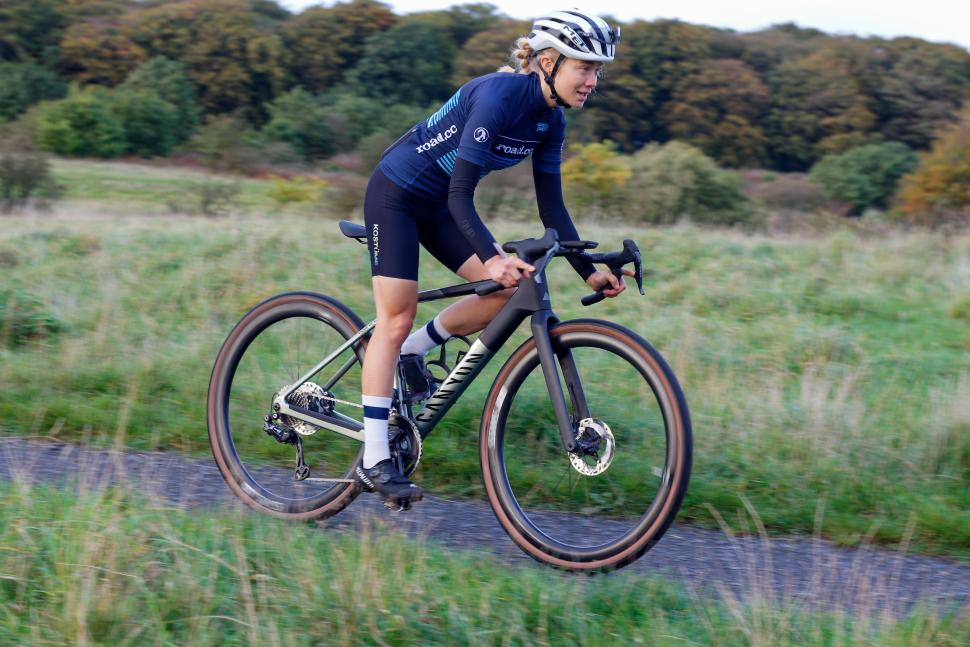
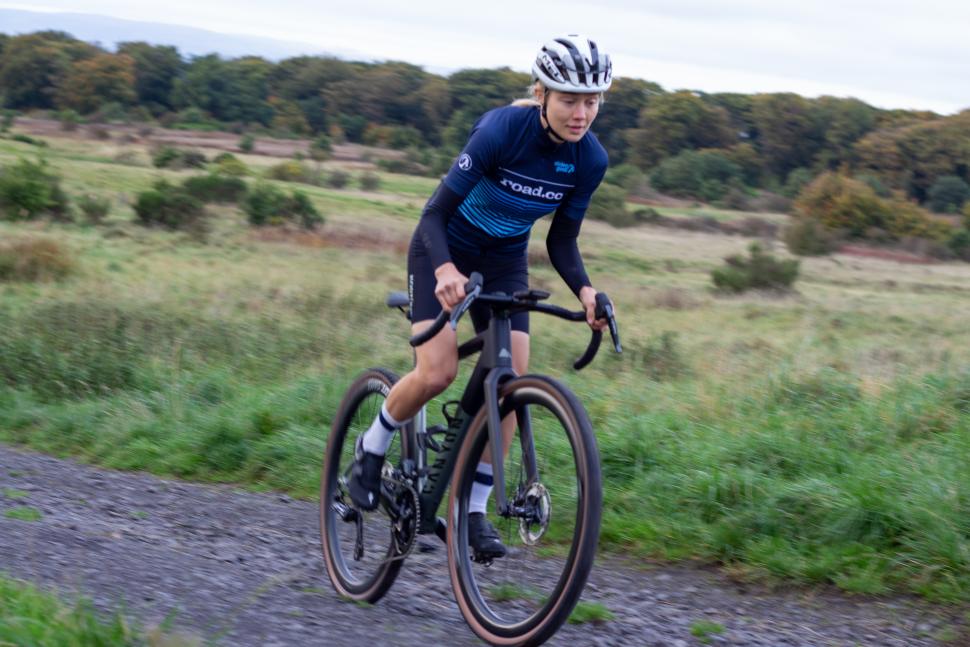
































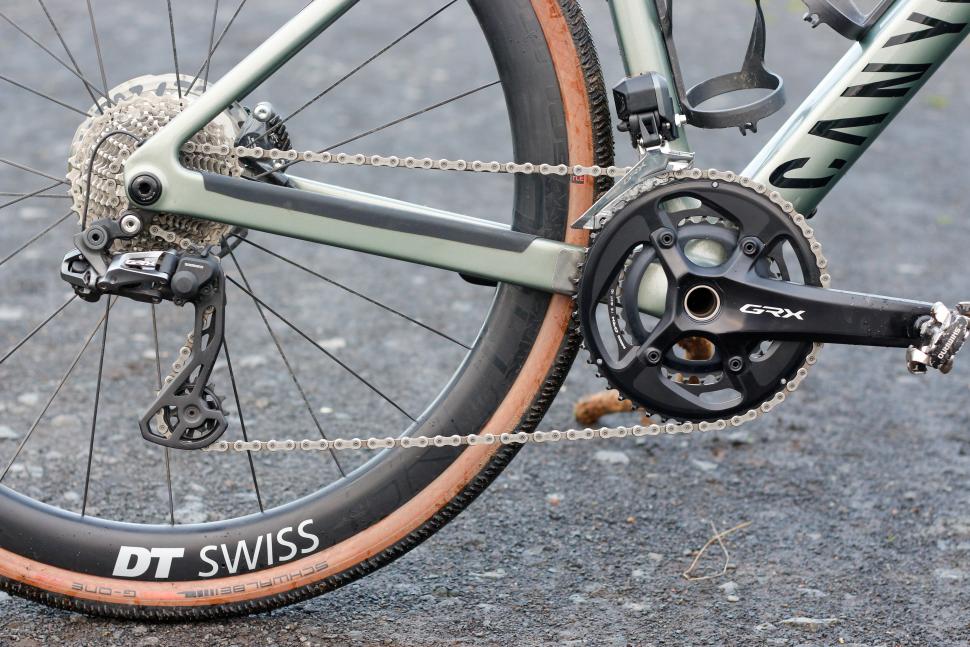
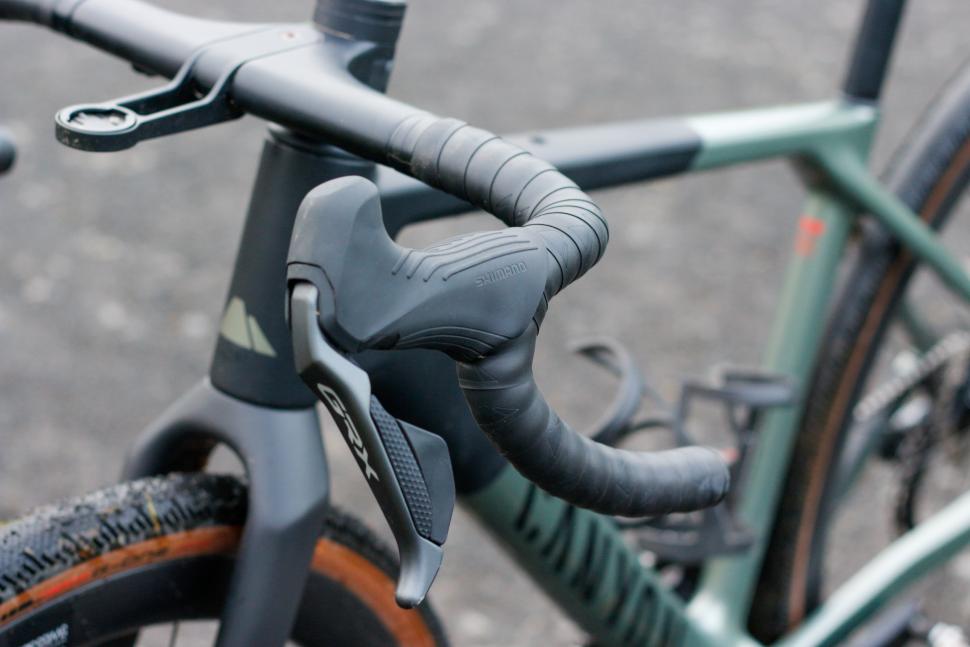








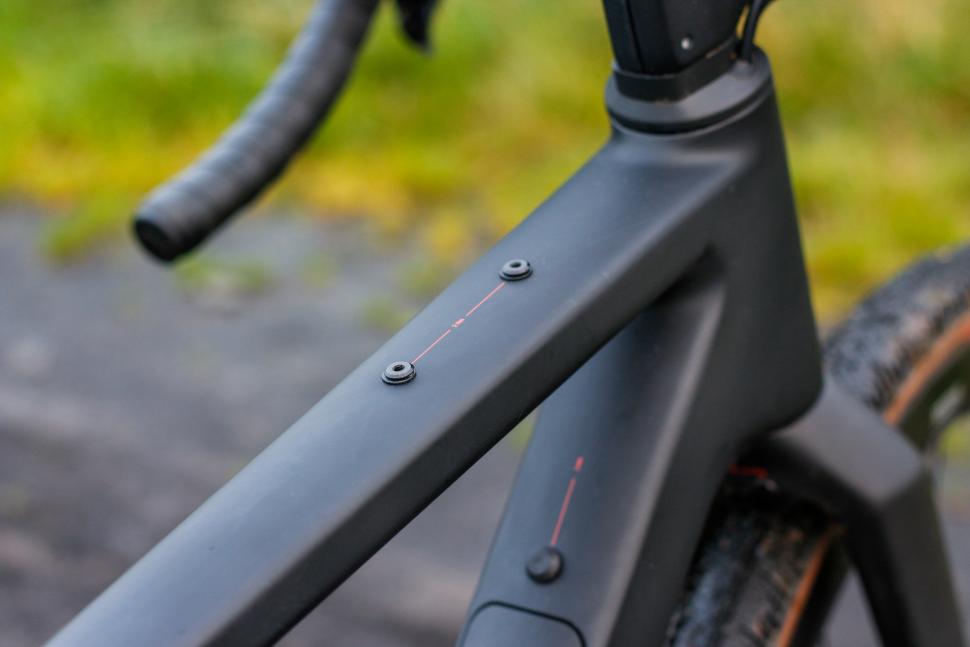
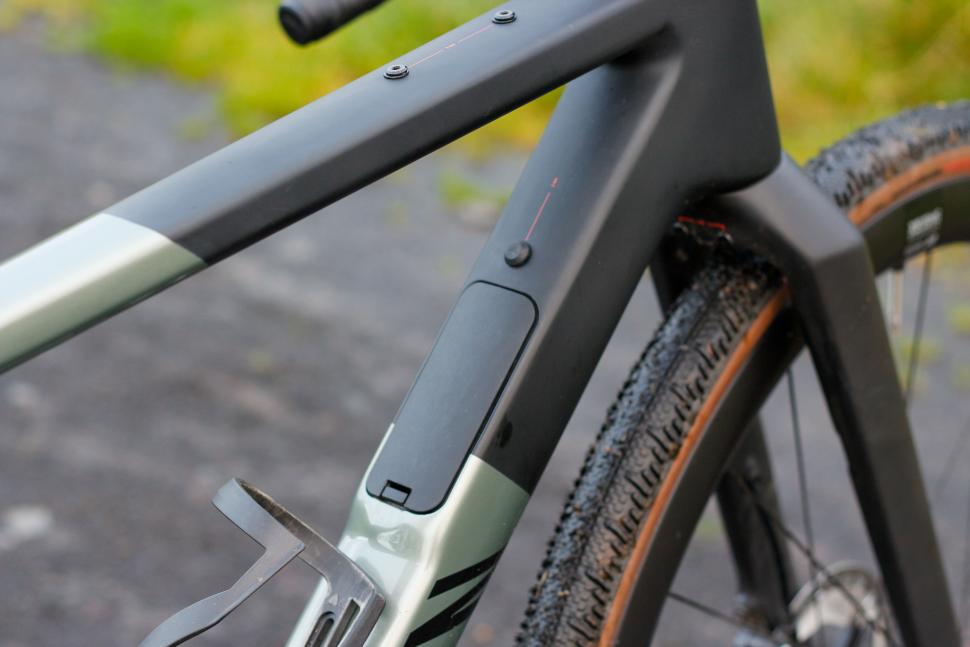

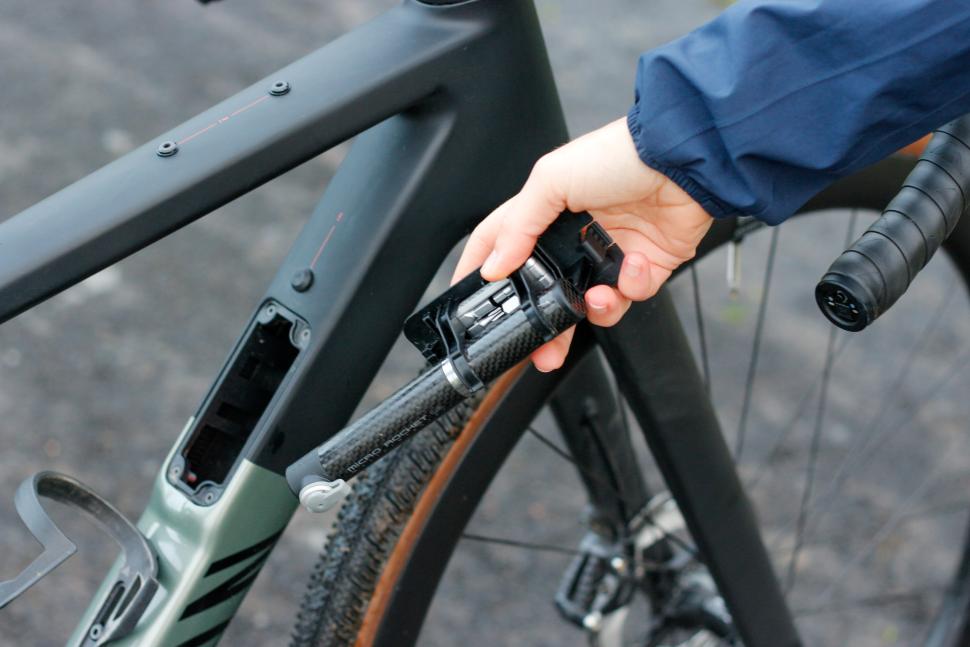
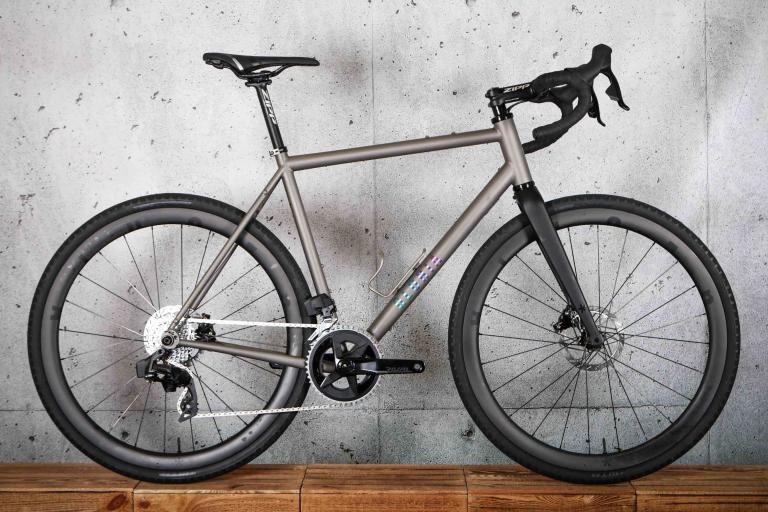
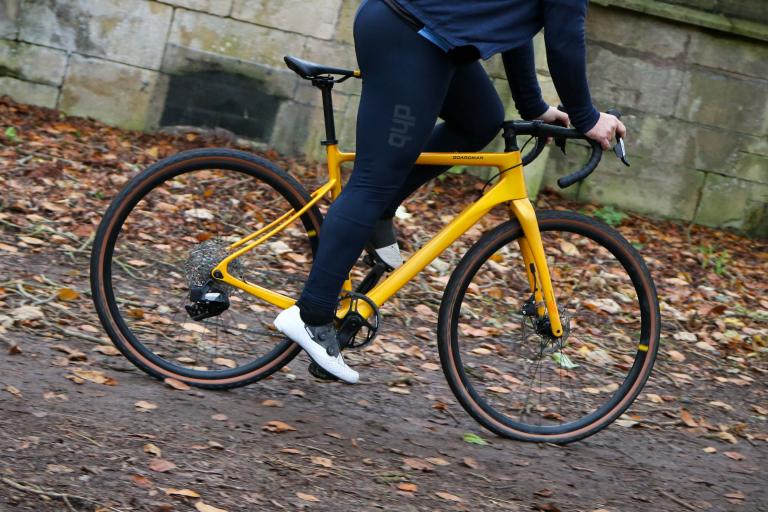

Add new comment
1 comments
In one of the photos the frame size is clearly marked as XS, and also looking at the reach/stack numbers. Is this the same bike that was tested or different size? I'm 5'7 and was thinking if I need to get XS or S.